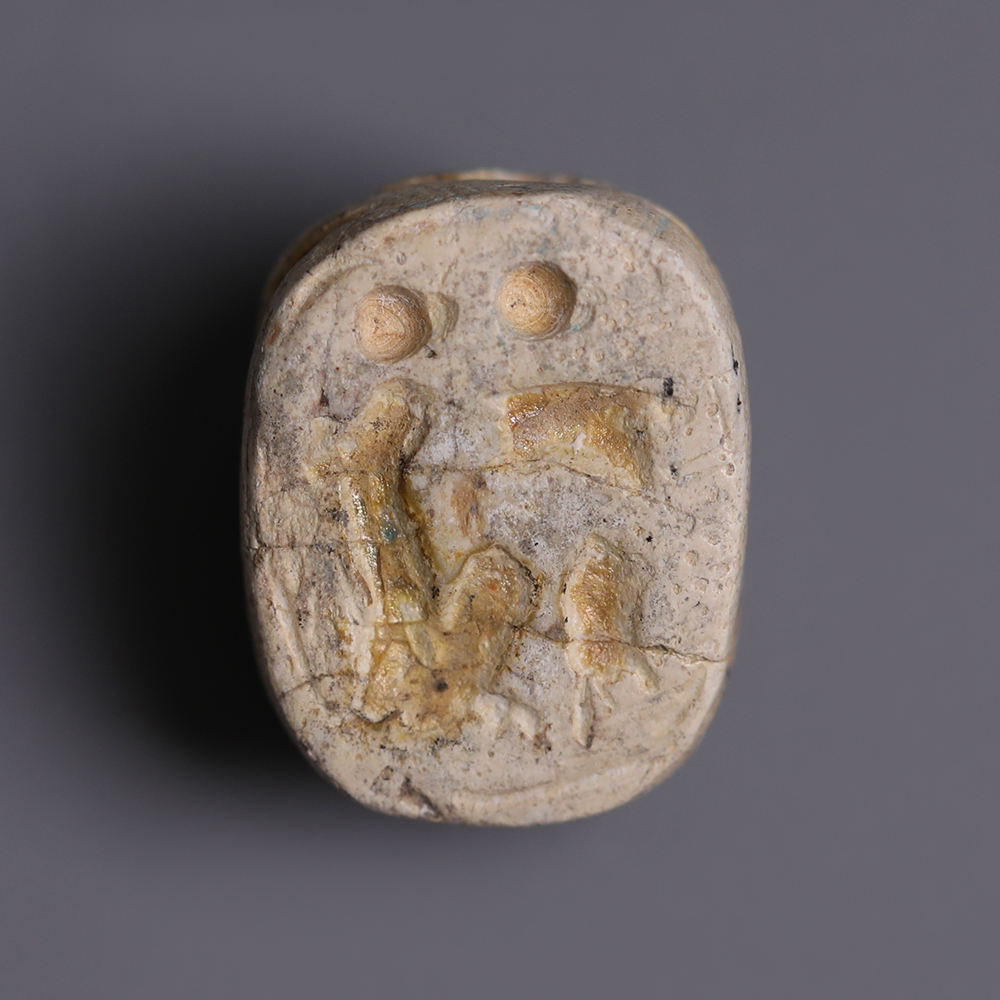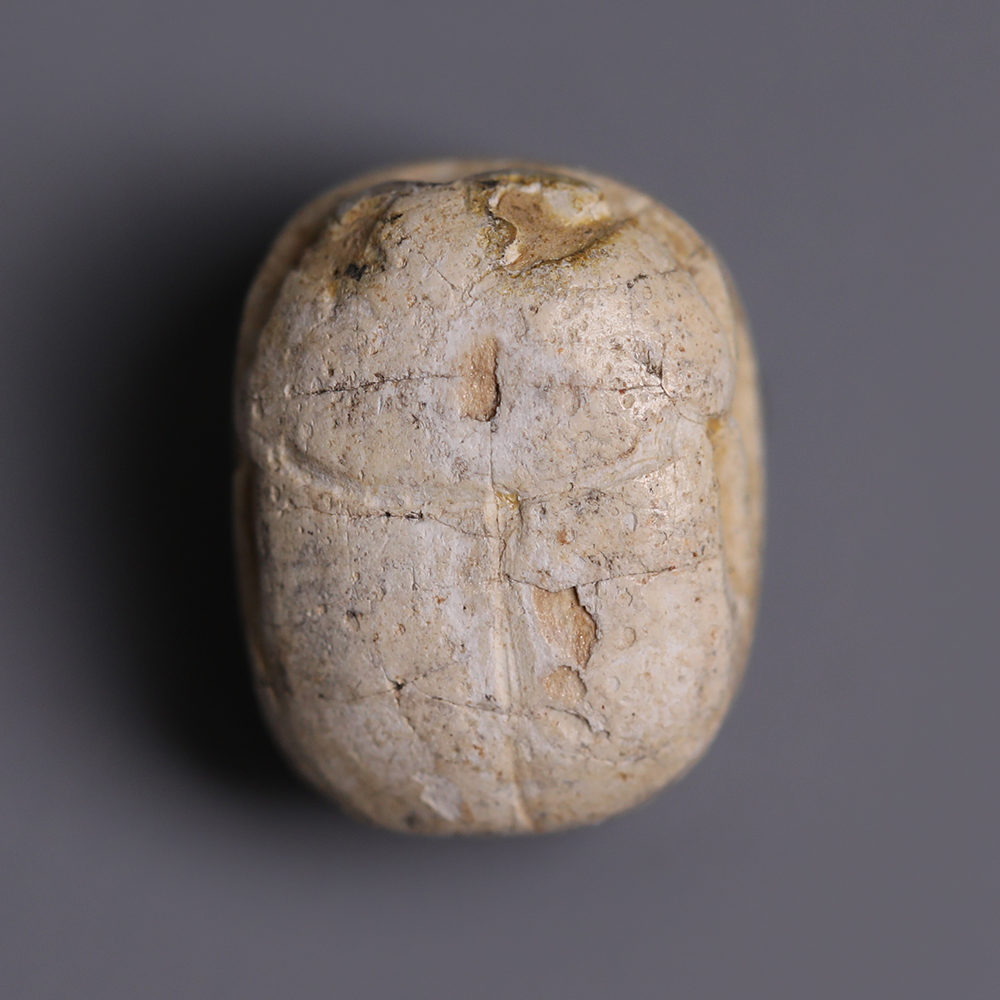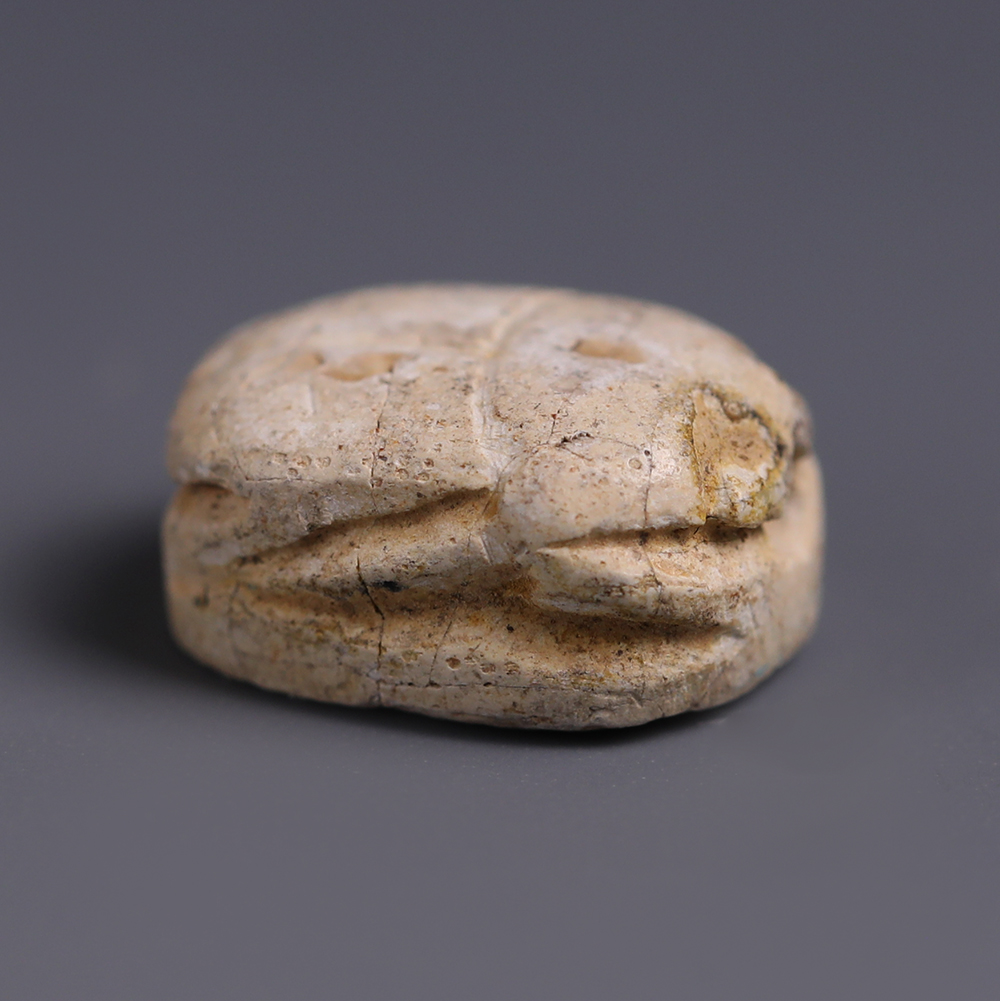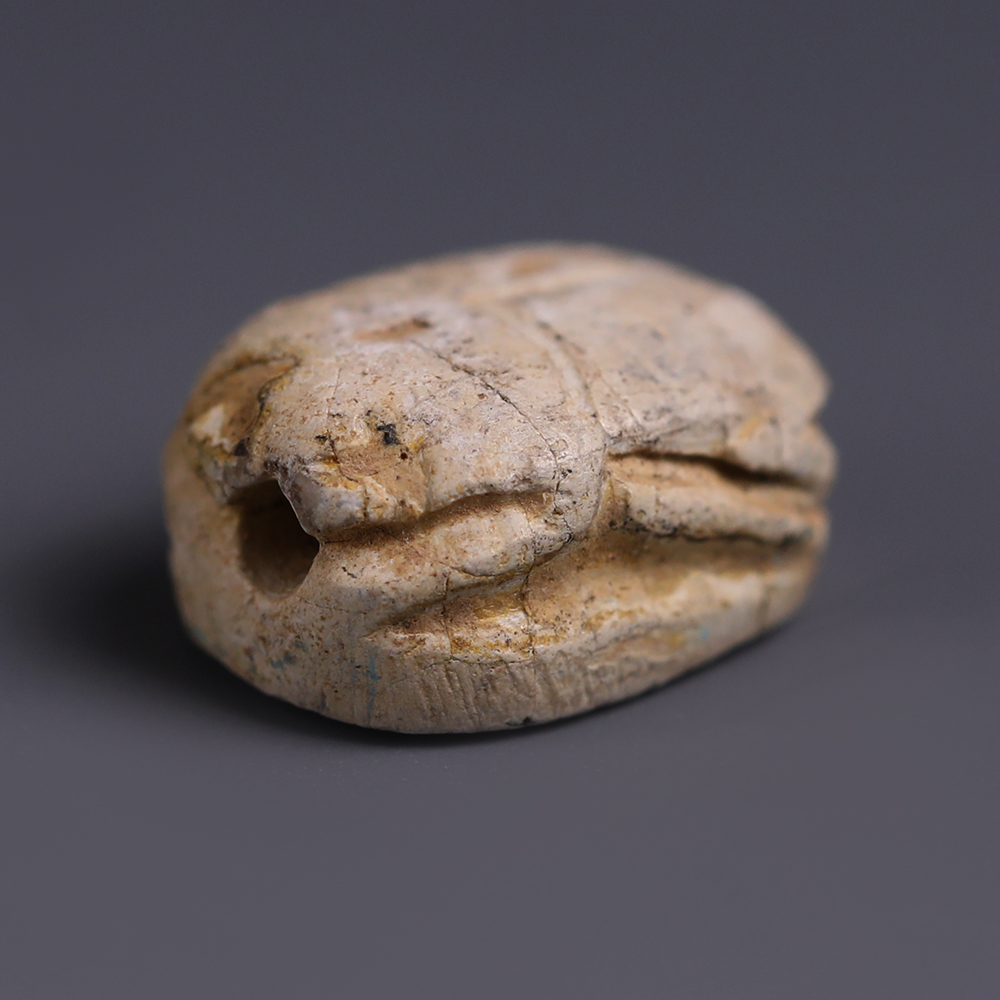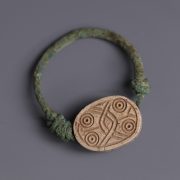The scarab beetle was an exceedingly popular symbol in the art of Ancient Egypt, thought to represent the sun god, Ra. The Ancient Egyptians believed that the scarab beetle rolling its ball of dung across the desert mirrored the journey of the sun across the sky from day to night. As the beetle laid its eggs within the dung, it became a symbol of rebirth and regeneration.
The combination of signs seen here allows for various interpretations. The hieroglyphs combine to form Men-Maat-Ra. This phrase was used in the prenomen of both Amenhotep III and Seti I and thus could be in imitation of the royal title. Translated, the phrase is deciphered as ‘Eternal is the ‘justice’ (or strength) of Ra’, so could also be a prophetic amulet, evoking the power of the gods. In certain cases it was also common for the feather of Ma’at to be used to portray the j instead of yod-sign in the writing of Amun. Thus, another meaning behind these particular hieroglyphs, could be an invocation to Amun-Ra.
To find out more about Ancient Egyptian amulets please see our relevant blog post: Egyptian Amulets and their Meanings.
